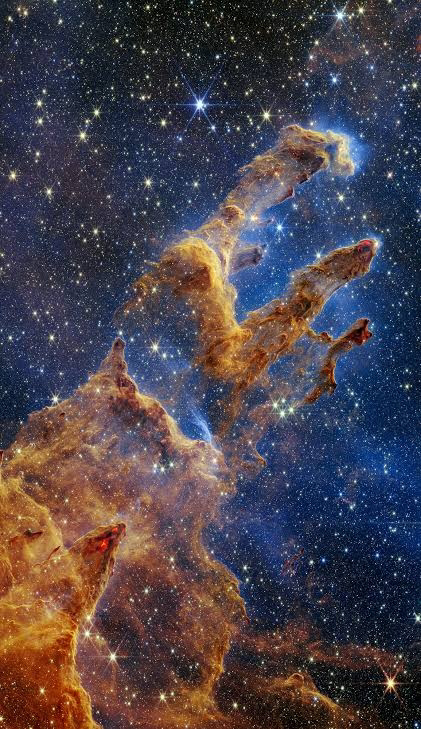Moolamurthy of Sri Venkateswaraswamy Tirumala
Tirumala Dhruva Bera
Tirumala Dhruva Bera is the name given to the idol of Lord Venkateswara in Tirumala Venkateswara Temple, Andhra Pradesh. Dhruva Bera is the official terminology used for the main deity of a temple with the exact translation being The Immobile image and as the name suggests, the idol is stationary and other idols are used for pujas, sevas that requires the deity's presence outside the garbha griham (sanctum sanctorum). Other terms used for Dhruva Bera include Moolavar or Moola Virat (Main Deity), Achala (Main).
Tirumala Dhruva Bera is considered to be Swayambhu - self-manifested and not created by human. According to Sri Venkatachala Mahatyam, Lord Venkateswara came to reside in this sacred spot to provide blessings to devotees in the Kali Yuga. The idol does not conform to the agamas (rules) for making a deity, thus furthering the belief that the temple's idol is Swayambhu.
HideIdol description
The dhruva bera stands approximately ten feet tall<[1] and stands a platform of about 18 inches. The platform follows a simple lotus design and the details of the any inscription on the platform is unknown to anyone except the temple's archakas (priests). The platform is usually covered in tulsi leaves except on Thursday afternoon and during Friday abhishekam.[2]
The face of the idol has exquisite features, with the nose neither flat nor prominent. The eyes are prominent and has the outline of 'namam' though it is not projected out of the idol. The eyes are partially covered with the namam made of pachakarpuram (raw camphor). The size, shape and details of the namam are governed by strict rules laid by the Vaikhanasa agamam. The idol has a crown carved up to the forehead and jatajuta (curly hair) resting on the shoulder. The chest is estimated to be between 36 to 40 inches in width and the waist would be between 24 to 27 inches, though there has never been a formal measurement of these statistics. Since the upper body is bare, features of the chest are prominently seen with the main feature being the image of a sitting Sridevi carved on the right side of the chest. The image of lakshmi is integral to the idol. The idol has 4 arms. The upper arms in the position to hold his weapons though the Chakram and Conch are not integral to the idol. The removable Sudarshana chakram is placed on the upper right arm while the Panchajanya - Vishnu's conch is placed on the upper left arm. The lower right arm is in the Varada Hasta pose - palms facing outward towards the onlooker to signal boon giving nature of the lord. The lower left arm is in the Katyavalambita pose - palm facing the lord with the thumb nearly parallel to the waist. The idol is seen with a dhoti worn waist downwards. Both the knees are slightly bent forward to indicate that the Lord is willing to come to the devotee's rescue. The shoulder of the lord has marks resembling scars made by constant wearing of bow and pack of arrows though the idol is not in the Tribhanga pose (unlike Tirumala Rama Idol)[2]
Ornaments
Tirumala Dhruva bera has a number of ornaments as seen on the idol. The yagnopavitam (sacred thread) is seen on the bare chest of the lord running from the left shoulder to the right waist. Four sets of necklaces are seen on the idol. The idol also has a two inch katibandham (waist band) running over the dhoti. The arms have armlets and the legs have ornaments near the ankle. The lord sports ear ornaments also.[2]



Comments